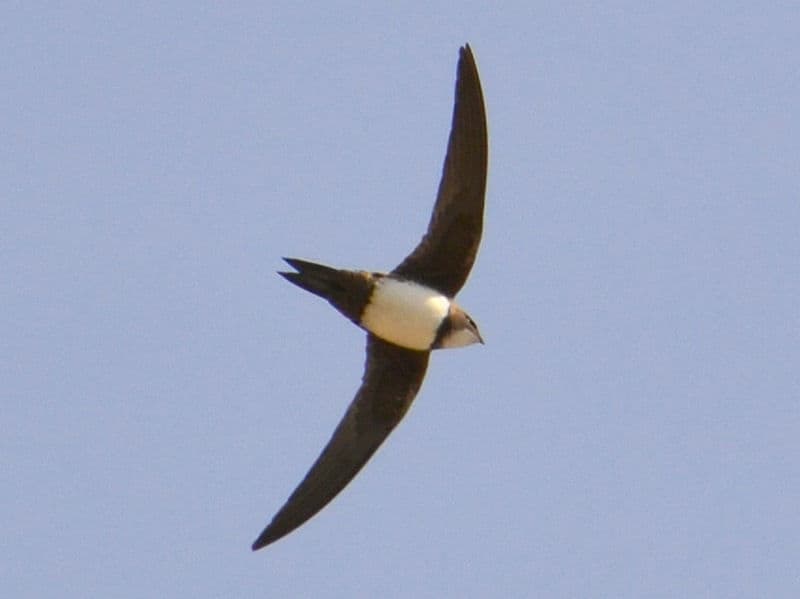Study: Migrating Birds Fly Non-stop for Six Months
OutdoorHub Reporters 10.10.13

At first glance, the Alpine Swift may not seem to be a remarkable bird. It has short, stubby legs, an average wingspan of 22 inches, and is remarkably similar to the common Barn Swallow. Unlike most other birds, however, the Alpine Swift hardly ever touches ground. A recent study by Swiss researchers confirmed that the swift can fly non-stop for more than six months, a streak of continuous movement that has not been recorded in any known bird or land animal.
“To date, such long-lasting locomotive activities had been reported only for animals living in the sea,” the scientists wrote in their report, which was published on Tuesday in the journal Nature Communications.
The report’s lead author, Felix Liechti, says he was shocked when they recovered the results of a months-long study. As a part of a team comprising researchers from the Swiss Ornithological Institute and Bern University of Applied Sciences, Liechti helped to capture six Alpine Swifts just before their long migration to Africa. The birds were then fitted with monitoring devices which tracked their movement and location. The team released the swifts and waited six to seven months for their inevitable return. Upon their re-capture, Liechti discovered that the birds had not stopped during their entire migration—not even once.
“It seemed to me unlikely that they did not rest somewhere on trees or cliffs,” Liechti told the Los Angeles Times. “I was very surprised.”
Early birdwatchers originally believed the Alpine Swift lacked legs, which was the origin of their scientific name Apus melba, which comes from Greek for “without feet.” The Swift had a reputation for spending their entire lives in the air and are almost never seen on the ground while alive. Rarely, they can be seen resting on a ledge on nesting on cliff face. Prior to the report, it had never been proven that Swifts could fly for so long without stopping. The findings, however, raised questions of how they eat, drink, or sleep while in flight.
“Even for an aerodynamically optimized bird, like the Alpine Swift, flying requires a considerable amount of energy for continuous locomotive control. Our data imply that all vital physiological processes, including sleep, can be perpetuated during flight,” the study postulated.
Indeed, researchers believe the birds are able to consume aerial plankton such as fungus, spores, small insects, and other edibles while in-flight. If true, it is an astounding attribute that the scientists did not expect. It is also believed that Alpine Swifts are capable of sleeping while gliding, using half of their brain to guide their movements while the other half sleeps. As for water, Swifts have been observed stealing a drink from lakes and rivers on the fly.
The next step for researchers is to figure out why the bird stays in the air so long. It could be a defense mechanism developed by the Swift to avoid land predators and disease or to exploit food sources other birds fail to take advantage of.
“We can only speculate as to what the profit is of staying airborne all the time,” Liechti said. “Is it avoiding predation? Parasites? We don’t know.”

